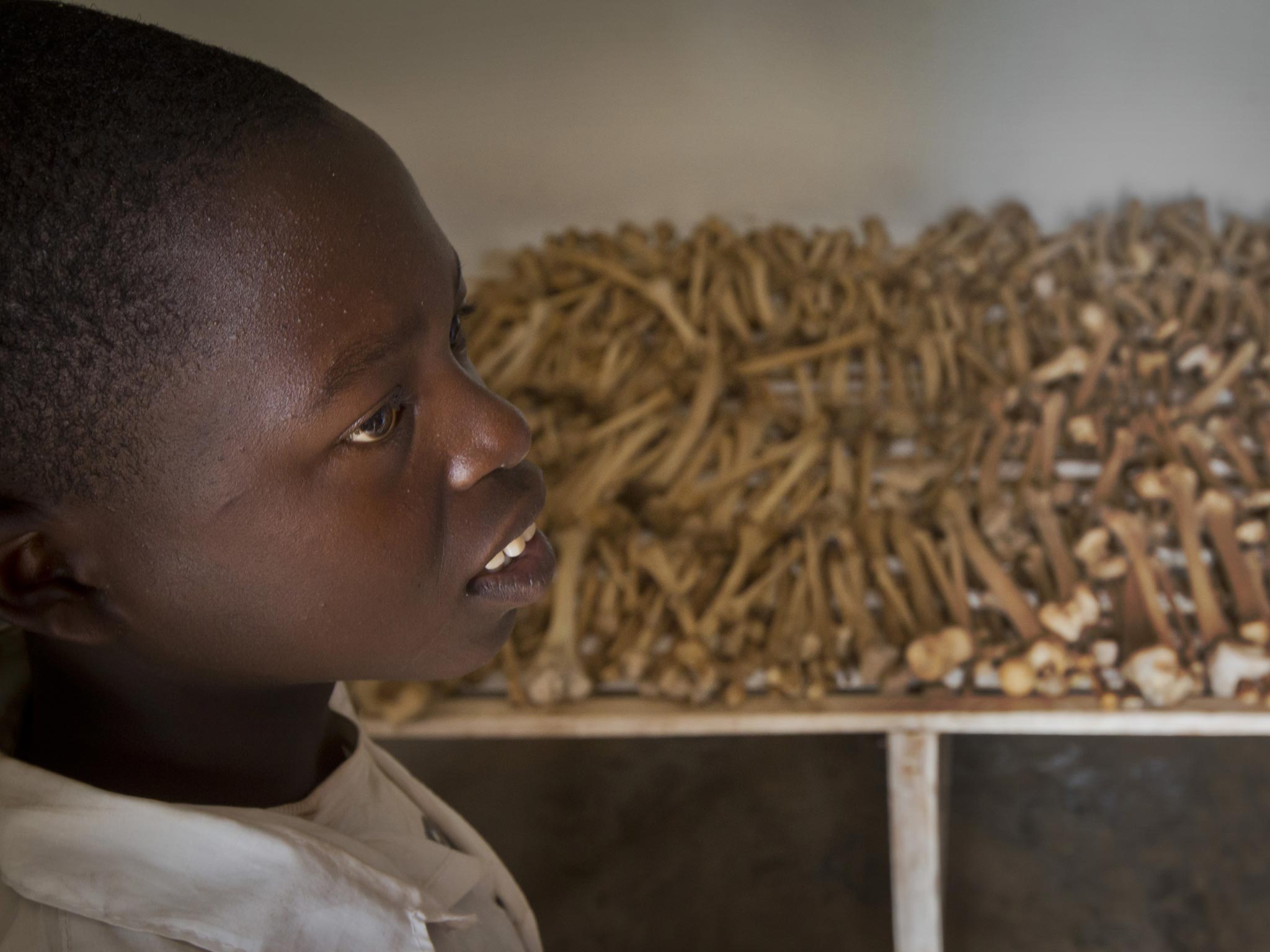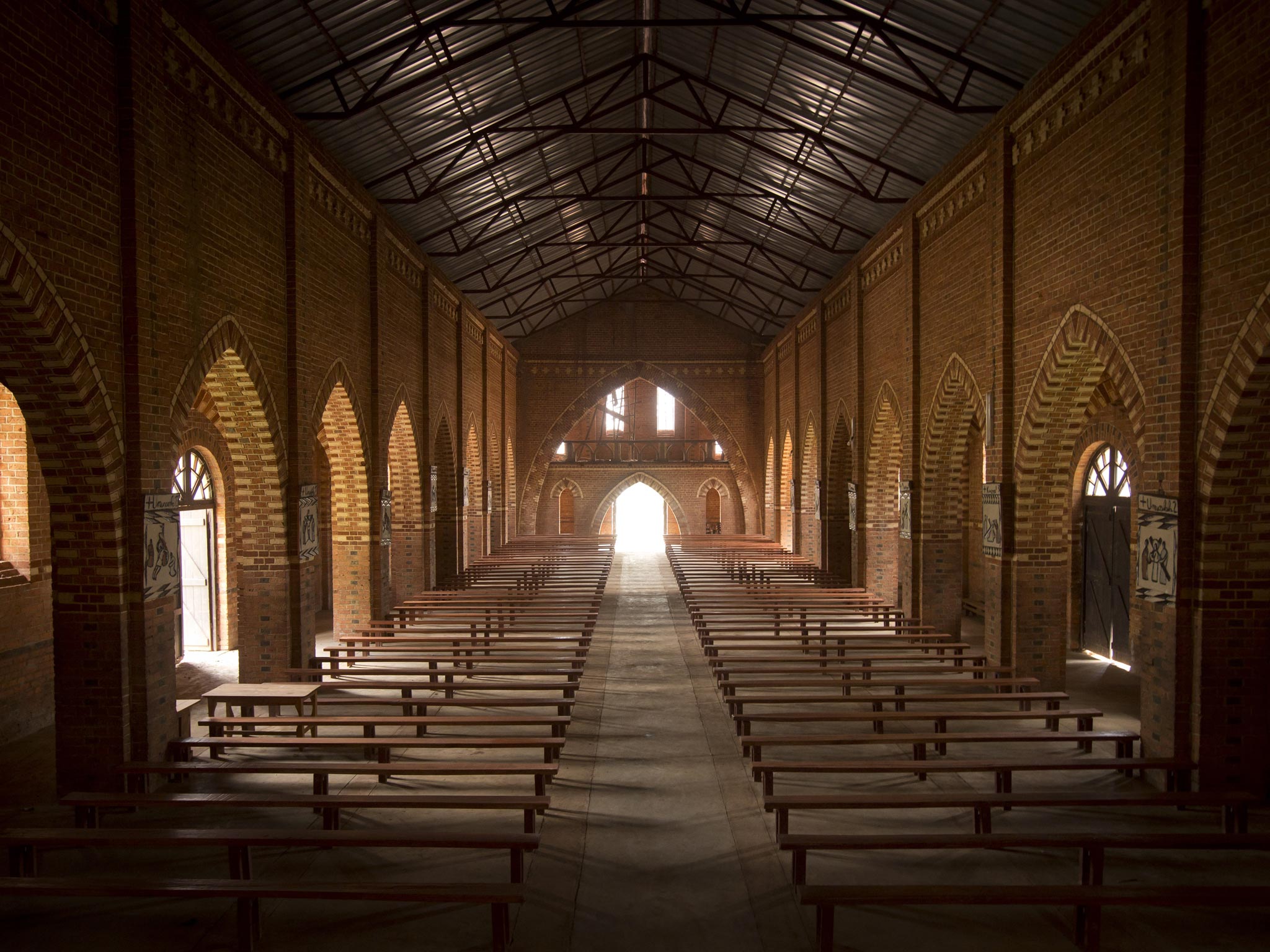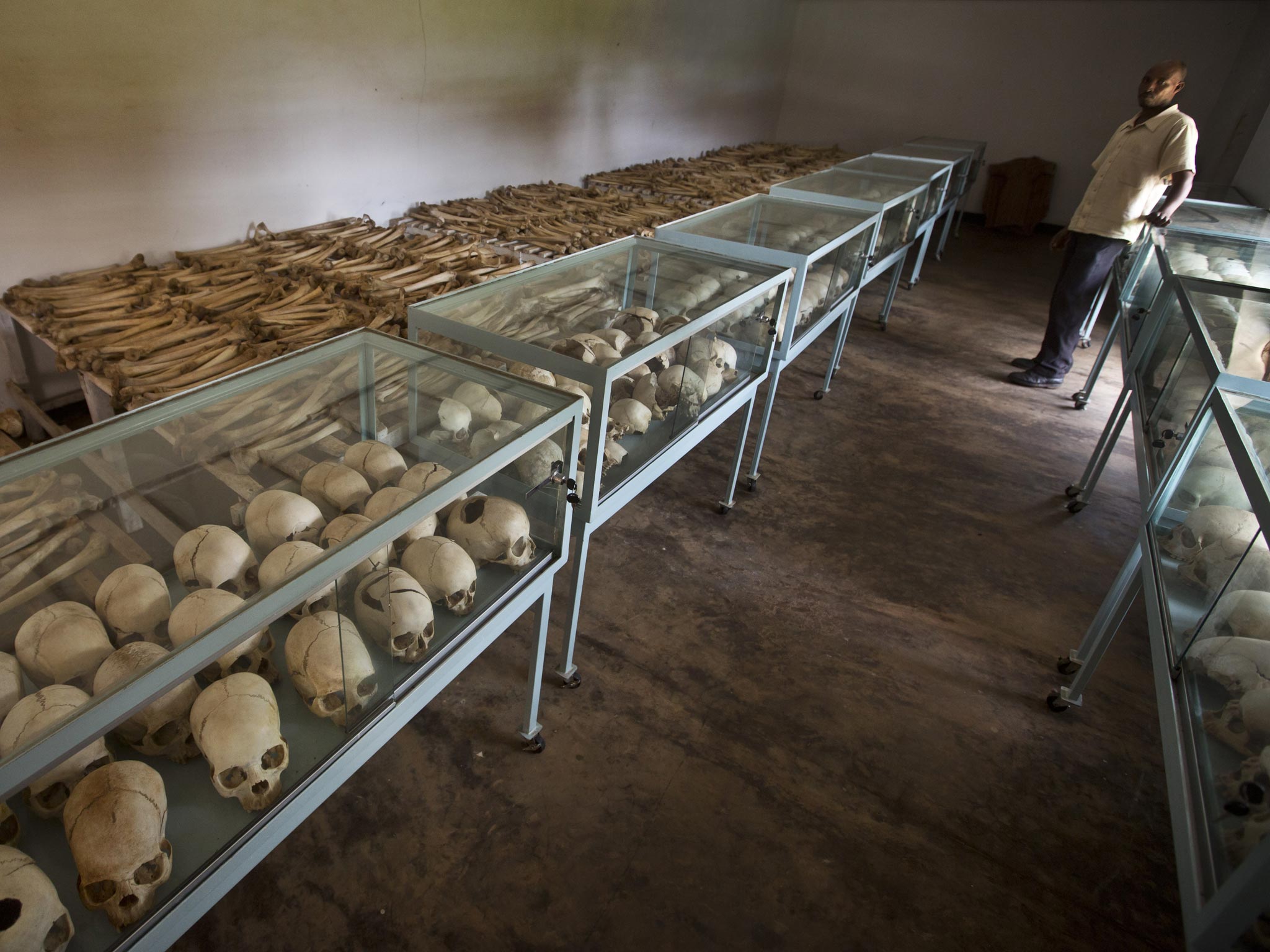Twenty years on, Rwanda still bears the scars of its genocide
In April 1994, a small, brutal African war exploded into an orgy of bloodshed that horrified the world. Richard Dowden, who witnessed it, believes that reconciliation remains a very long way off

It was possibly the fastest genocide in history. They called it work – “Kasi” – carried out with methodical planning and execution. Guns, grenades, spears, studded clubs, hatchets but mostly kitchen knives were used. Many women were raped before they were murdered. The final solution was planned and proclaimed by national and local government, and carried out by the army and police and the ordinary people guided by traditional social hierarchies based on the Collines – hills of Rwanda. All were urged on by radio stations and some public officials, and carried out with appalling efficiency.
In such a densely populated country it was hard to hide or escape. Even the churches were not places of sanctuary. Indeed many pastors and Catholic priests were involved in the killing. Some killed because they wanted to, others because they were forced to. If you did not kill, you could be killed. So the killers, mostly ordinary people who were simply obeying their traditional leaders and local authorities, would round up the Tutsis in their area, slit their ankle tendons so they could not get away and then systematically butcher them like cattle. It was hard work and clearing up afterwards was not easy. The people made crude attempts to burn or bury them, or dumped them in the streams and rivers, or just left them strewn around.
It was not the first time this had happened in Rwanda, or in Burundi, or parts of eastern Congo where the relationship between Hutu farmers who tilled the land and Tutsi cattle keepers also caused problems. The mix varied but overall it is reckoned that about 15 per cent of the population in the region is Tutsi. There had been attempts at extermination before, the worst in 1959 and 1963.
As Africa Editor of The Independent, I had been in Rwanda for two days that year on my way to Congo. The capital was tense but only one person, Phillipe Gaillard, head of the Red Cross, had warned of genocide. Other diplomats and aid workers put their trust in the ceasefire, and negotiations between the government and the Rwanda Patriotic Front (RPF), the army of Tutsi exiles that had invaded from Uganda the previous year.
There was no reason to think the world – or my editor – would be interested in another small war in Africa, particularly francophone Africa. In the post-Cold War period in the early 1990s, many African dictators had been toppled and wars had started. There had been a similar massacre in Burundi the previous year that merited no more than a few lines in the western press. That story had never made the front page.
On 6 April 1994, I was getting ready to go to South Africa to cover its first-ever democratic election. This was the top item on the world news agenda, but then came the report that the plane carrying President Juvenal Habyarimana of Rwanda and the Burundi president had been shot down at Kigali airport. Knowing the lack of interest in Rwanda, I consulted the Foreign Editor and it was agreed I should go to South Africa. There is no doubt that had the two events not coincided, Rwanda would have got more attention.

What I had picked up on previous visits to Rwanda was that the Hutus who had fled from the 1993 invasion of Tutsis from Uganda had become absolutely terrified of them. Why had these highly intelligent and militarily competent men who, as Yoweri Museveni’s lieutenants, had defeated the British-trained and supplied Uganda army in the 1980s, rushed headlong into Rwanda? In southern Uganda they had moved cautiously and been welcomed as liberators from the hated Milton Obote regime. But after years of anti-Tutsi propaganda by the Habyarimana regime, they could not have believed they would be welcomed as liberators. As soon as the polls closed in South Africa, I got on a plane to Uganda and then drove to Rwanda. I was escorted down the east side of the country by two RPF fighters. Most of the area was deserted but for the corpses of those recently killed that had been left lying in the streets of the small towns we passed through. Eventually we reached the Kagera river, the border with Tanzania. Here the road crosses a bridge over a waterfall as the river narrows into a rocky channel. Swirling through the eddies were scores of pallid, dark bodies floating and bobbing down a narrow channel, some just spinning lazily. Many were naked and bloated, some of their belly buttons erect, pointing like accusing fingers to the sky. As they shot off down the river, more and more kept coming.
In the newly set up camp across the border in Tanzania were thousands of refugees. Other journalists had got there from the Tanzanian side and they were recording the stories the refugees told them: that the Tutsis had come back to kill them all and the bodies we had seen in the river were the victims of the Tutsi massacres. For a few moments I was puzzled until a nurse who was herself a refugee pulled me aside and told me that what was being said was lies. These were the Hutu killers pretending they were the victims, not the perpetrators.
The aftermath of genocide was momentous. The remains of the Rwandan army accompanied by many of the Interahamwe, the killer militia, fled into Congo as did most of the Hutu population. They camped out around the town of Goma just across the border, more than a million people. The desperate needs of the refugees, the dramatic beauty of the place and its easy accessibility made it a fundraising paradise for the NGOs; 148 registered there over the few months towards the end of 1994. Much of the food and supplies found its way to the defeated Rwandan army camped out nearby. Meanwhile the victims – the Tutsi survivors – in Rwanda itself were almost completely ignored.

The new government of Rwanda quickly set about four projects. It sent its army into Congo, ostensibly to bring back the refugees and attack the former Rwandan army and the Interahamwe killers. They then continued across the continent on foot to Kinshasa, overthrew Mobutu Sese Seko and replaced him with a former rebel, Laurent Kabila. Second, they began to rebuild Rwanda as a single society where Hutu and Tutsi were no longer recognised, though the Tutsis would remain in ultimate control. Third, they stayed in eastern Congo to ensure its great mineral and agricultural wealth came eastwards across the border to fuel Rwanda’s tiny economy. That meant keeping allies across the border well supplied and supported. Fourth, they used the West’s guilt about failing to act in 1994 to ensure its support for these policies.
The first of these four projects succeeded until Kabila tried to shake off his Rwandan controllers. The Rwandans invaded Congo again in 1998 but Kabila had forged alliances with Angola and Zimbabwe and their intervention sparked a war that sucked in nine African armies. The Rwandans were forced to withdraw but left proxies in place which they supplied and directed. This created a war in Congo that may have killed more than four million people – which puts Rwanda’s own genocide into a different perspective. The most recent Rwandan proxy was the M23 movement which caused such mayhem that Rwandan was forced to abandon it and possibly its main source of wealth from Congo. This has made Western governments pull back from their initially whole-hearted support for President Kagame.
Internally Rwanda is one of the most tightly controlled societies in Africa, where human rights and freedom of speech are severely curtailed. There is no free press, so it is hard to judge whether Rwandans are beginning to forget if they are Hutu or Tutsi. But dissent that has come from among Kagame’s own lieutenants – not from former genocidaires – has been fiercely dealt with. His former comrades who fell out with him have been assassinated, most recently with the killing of Patrick Karegeya, a former intelligence chief in January. After 20 years, it may be time for less punitive and controlling government and a more open society which would allow for genuine, not imposed, reconciliation.
Richard Dowden is director of the Royal African Society and author of ‘Africa, Altered States Ordinary Miracles’, published by Portobello Books
Ethnic tensions: How the slaughter start ed
In the early 1990s Hutu extremists in Rwanda’s political elite blamed the Tutsi minority population for social, economic, and political ills. Tutsi civilians were accused of supporting a Tutsi-dominated rebel group, the Rwandan Patriotic Front (RPF). Remembering past years of oppressive Tutsi rule, many Hutu resented and feared the minority.
On 6 April 1994, a plane carrying President Habyarimana, a Hutu, was shot down. Under the cover of war, Hutu extremists launched plans to destroy the Tutsi population.
In a matter of weeks, 800,000 men, women, and children died, including a number from Rwanda’s much smaller Twa ethnic group. Thousands of Hutu who opposed the murderous campaign were also killed. It is estimated that some 200,000 people helped perpetrate the Rwandan genocide.
Join our commenting forum
Join thought-provoking conversations, follow other Independent readers and see their replies
Comments